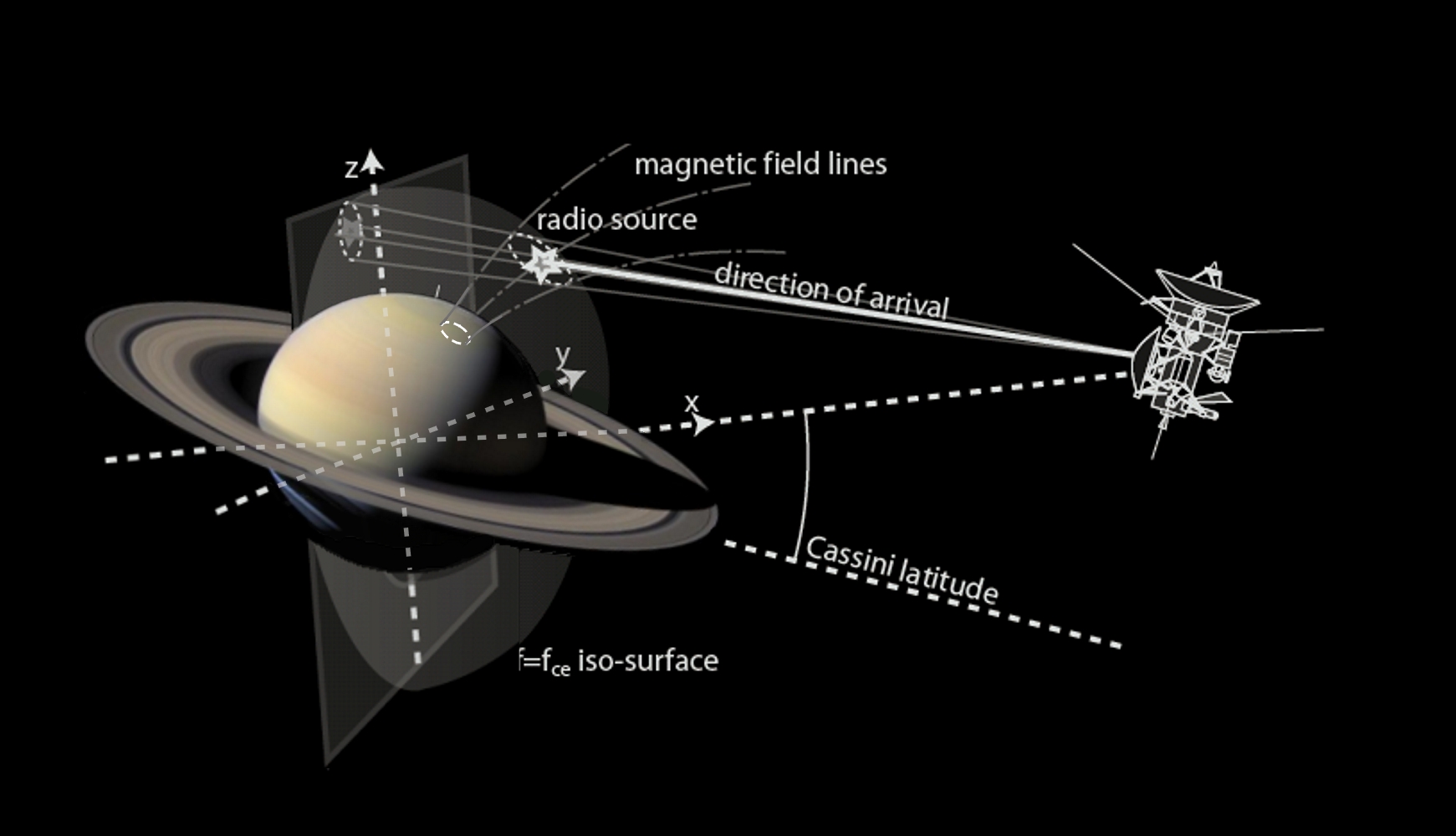[/caption]
While Saturn and its rings are beautiful and wondrous, the sounds of Saturn are eerie and strange. Scientists have been trying to understand the bizarre radio emissions that come from the ringed planet, called the Saturn Kilometric Radiation (SKR). Scientists have used observations from NASA's Cassini spacecraft build a 3-D picture of these intense radio emissions emanating from Saturn's magnetic field. The SKR radio emissions are generated by high-energy electrons spiraling around magnetic field lines threaded through Saturn's auroras.
Previous Cassini observations have shown that the SKR is closely correlated with the intensity of Saturn's UV aurora and the pressure of the solar wind. "The animation shows radio sources clustered around curving magnetic field lines," said Dr. Baptiste Cecconi, of LESIA, Observatoire de Paris. "Because the radio signals are beamed out from the source in a cone-shape, we can only detect the sources as Cassini flies through the cone. When Cassini flies at high altitudes over the ring planes, we see the sources clearly clustered around one or two field lines. However, at low latitudes we get more refraction and so the sources appear to be scattered."
Link to 3-D animation.
The active area of the magnetic field matched up with near-polar latitudes degrees in both the northern and southern hemisphere, the location of Saturn’s UV aurora.
"For the purposes of the model, we've imagined a screen that cuts through the middle of Saturn, set up at right-angles to the line between Cassini and the centre of the planet. We've mapped the footprints of the radio sources projected onto the screen, which tilts as Cassini moves along its orbital path and its orientation with respect to Saturn changes. We've also traced the footprints of the magnetic field lines back to the cloud tops of Saturn," said Cecconi.
Listen to the sounds of Saturn.
Although there were some minor differences between emissions in the northern and southern hemispheres, the emissions were strongest in the western part of Saturn'ss sunlit hemisphere. This area corresponds to a region of Saturn's magnetopause where electrons are thought to be accelerated by the interaction of the solar wind and Saturn's magnetic field.
The measurements were made using Cassini's Radio and Plasma Wave Science (RPWS) experiment.
Cecconi presented his results at the European Planetary Science Congress on Tuesday, September 23rd.
Source: European Planetary Science Congress
casskrtrig04207a
 Universe Today
Universe Today
